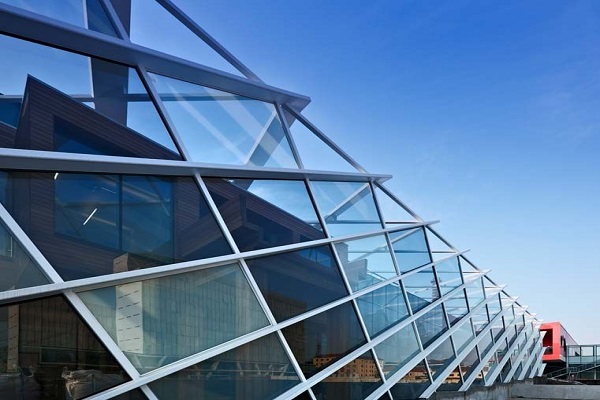A steel frame and wire-supported glass curtain wall is a type of building facade system that consists of a structural steel framework and glass panels supported by tensioned wires. It is a popular choice for modern commercial buildings, providing a sleek and transparent appearance.
Here’s a breakdown of the components and features of a steel frame and wire-supported glass curtain wall:
- Structural Steel Frame: The curtain wall system begins with a steel framework that is designed to provide the necessary structural support. This framework is typically constructed using steel mullions (vertical members) and transoms (horizontal members) that are connected to the building’s structural elements.
- Glass Panels: Large glass panels form the primary glazing material of the curtain wall. These panels are typically made of tempered or laminated glass to enhance strength, safety, and energy efficiency. They are attached to the steel framework using various methods such as structural silicone glazing or bolted connections.
- Wire Support System: Tensioned wires are used to provide additional support to the glass panels. These wires are typically made of stainless steel and are strategically placed at regular intervals across the height and width of the curtain wall system. They help to distribute the loads from wind and other external forces, ensuring stability and reducing the stress on the glass panels.
- Spiders or Point Fixings: Spiders or point fixings are specialized hardware components used to connect the glass panels to the tensioned wires. These fixings are usually made of stainless steel and provide a secure attachment point while allowing for some flexibility and movement of the glass panels.
- Sealants and Gaskets: Proper sealing is crucial in a curtain wall system to prevent air and water infiltration. Sealants and gaskets are used to create a watertight and airtight barrier between the glass panels and the steel framework, ensuring weather resistance and thermal insulation.
- Thermal Breaks: To enhance the energy efficiency of the curtain wall system, thermal breaks are often incorporated into the steel framework. These breaks are made of materials with low thermal conductivity, such as polyurethane or fiberglass, to minimize heat transfer between the interior and exterior of the building.
The steel frame and wire-supported glass curtain wall system offers several advantages, including aesthetic appeal, daylighting, panoramic views, and flexibility in design. It allows natural light to enter the building, reduces the reliance on artificial lighting, and provides occupants with a connection to the outdoors. Additionally, the system can be customized to meet specific architectural requirements, making it a popular choice for contemporary building designs.


